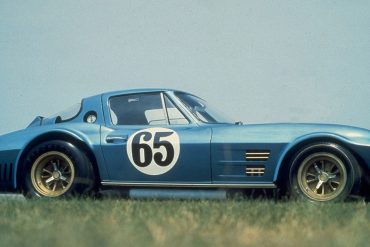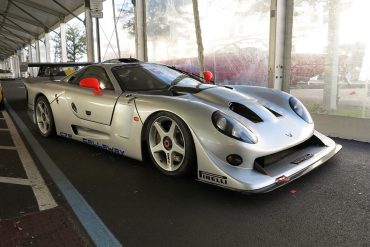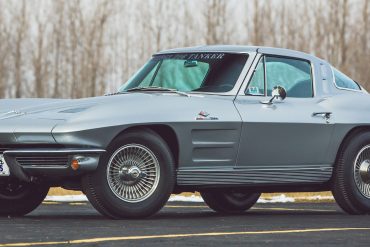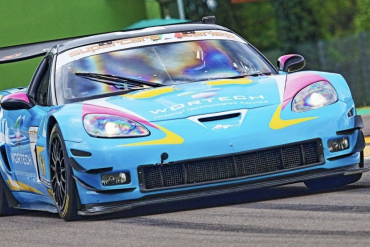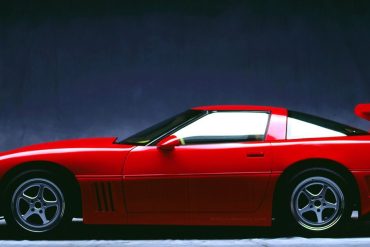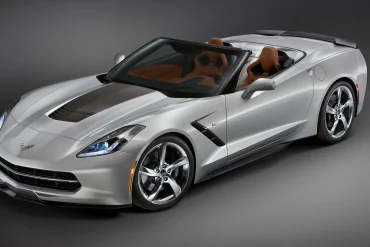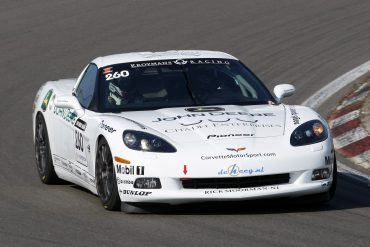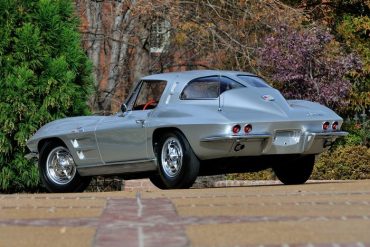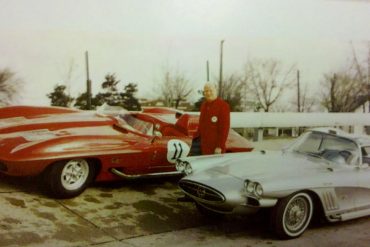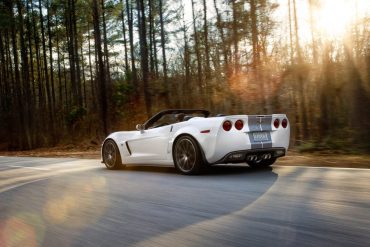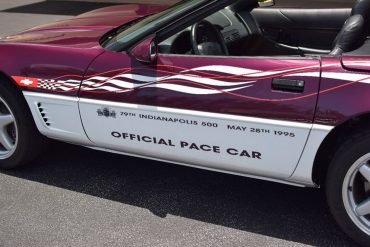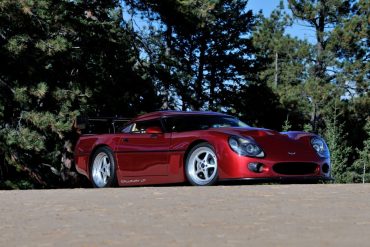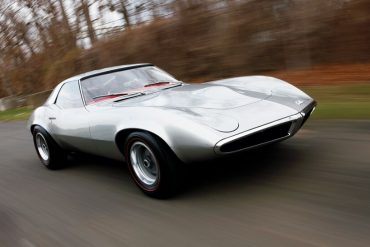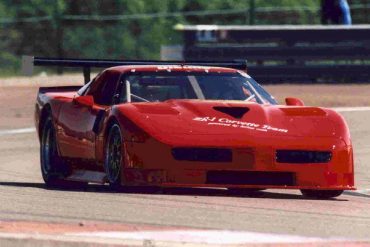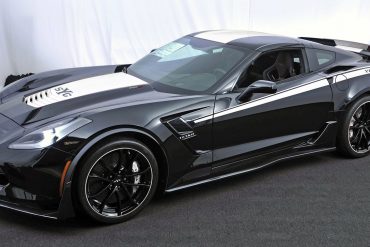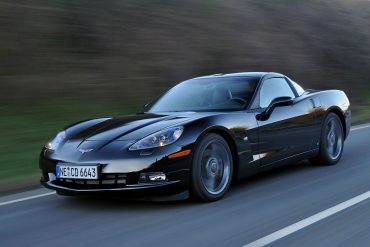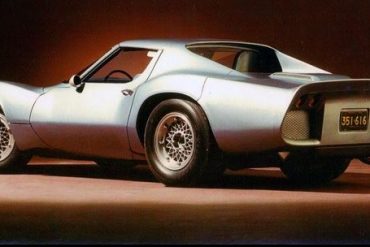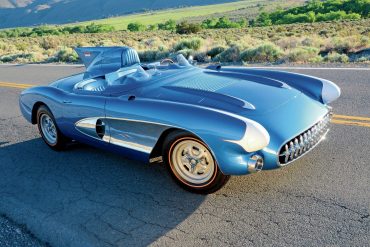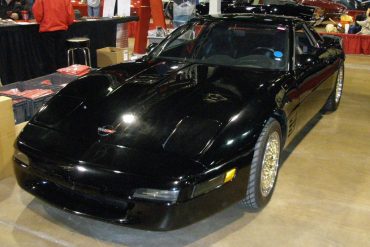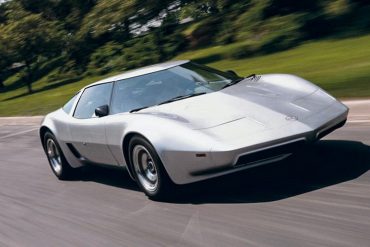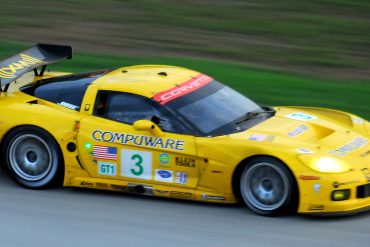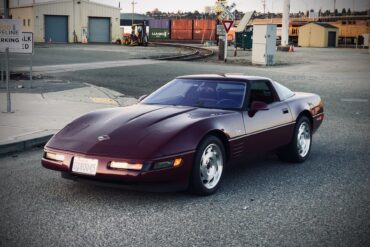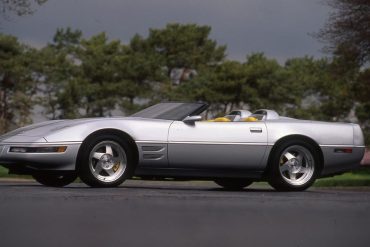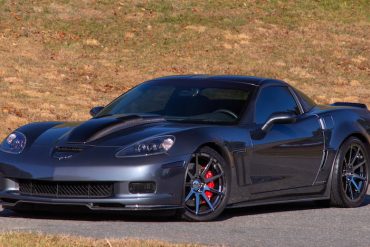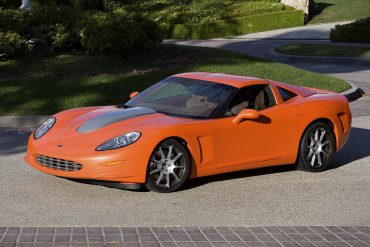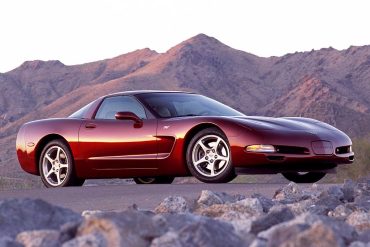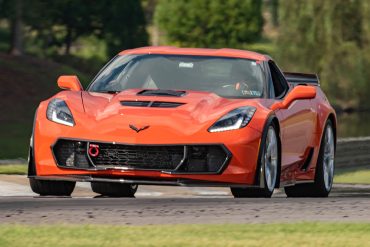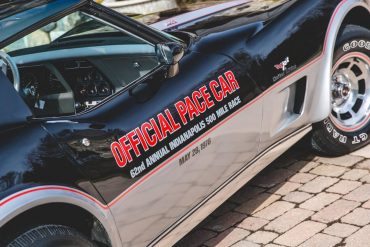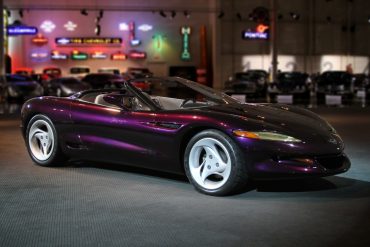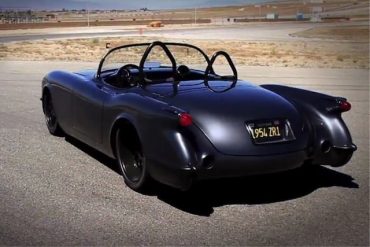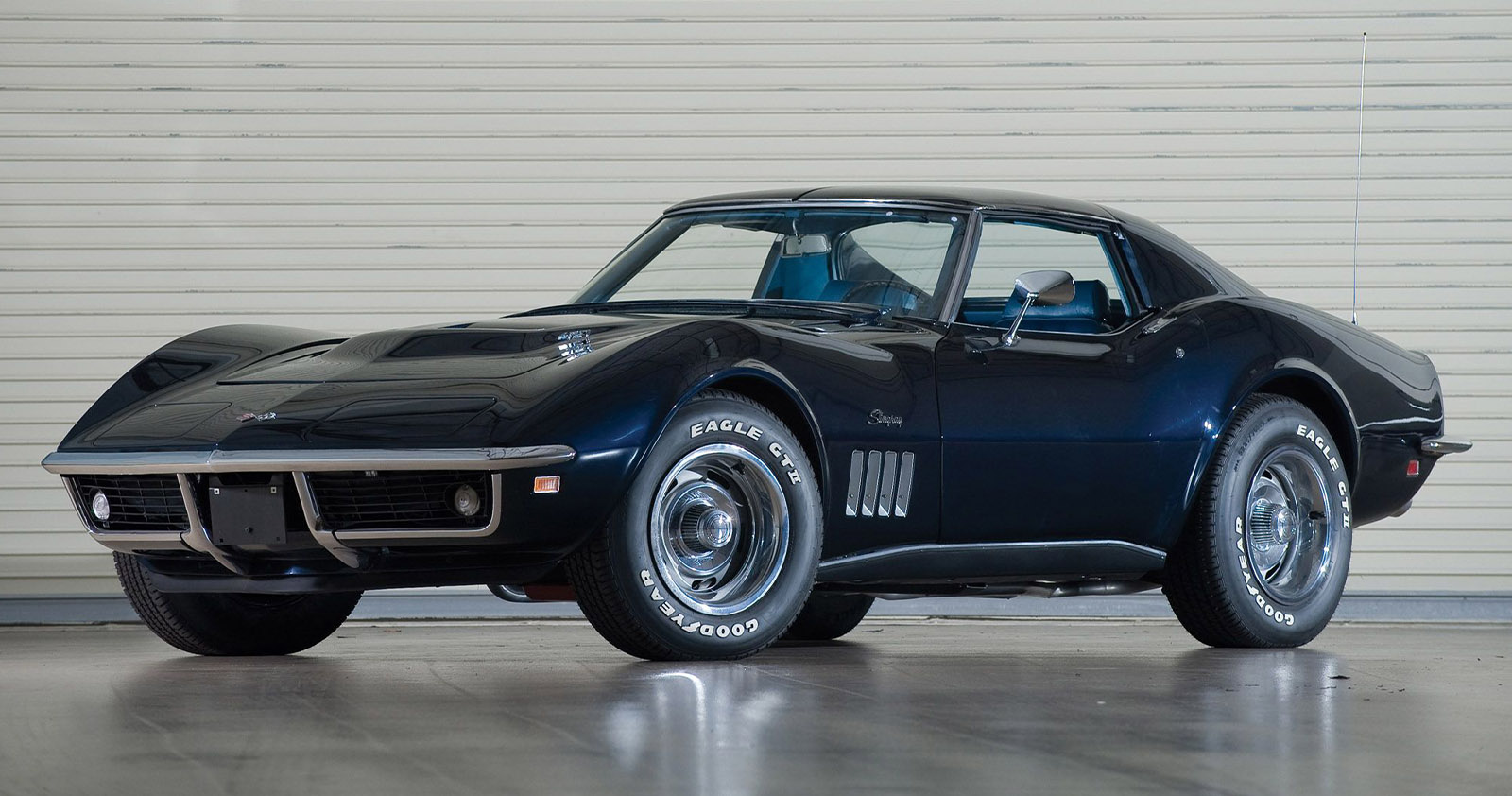Some of the iconic American sports car’s earliest forays into racing were snuffed out before they ever truly began. The 1963 Corvette Grand Sport, a Zora Arkus-Duntov designed rendition, of the C2 was staged for track domination, both at home and abroad.
The Callaway C7 was a completely new, purpose-built car designed to embody the company’s motto: “Powerfully Engineered Automobiles”, carrying on the visual tradition of design by Paul Deutschman and offered in a limited production series. The C7 was the first complete, bespoke Callaway Automobile. This sportscar was equipped with a carbon chassis, front mid engine/rear transaxle design, 650 horsepower SuperNatural engine.
The first Z06 was actually an option package first offered with the 1963 Corvette. The package was developed by Corvette's legendary lead engineer and racing advocate Z0ra Arkus-Duntov. The Z06 option was designed to allow consumers to bolster the 1963 "Split-Window" Corvettes performance and handling capabilities for use on the race track. Selecting regular production option (RPO) Z06 when ordering a Corvette resulted in a car equipped with some tasty options.
During the summer of 2005, a decision was made to transform selected Z06 road cars into a new breed of racer to compete in the world's top GT3 championships. The first series to introduce this new GT3 class was the SRO and FIA's GT3 Championship. Based on their racetrack test results, Team Carsport saw instant potential in the car. Hezemans contracted Callaway Competition in conjunction with Koos Pettinga, manager at Corvette Europe, to convert the street Z06 into a Z06R GT3.
Reeves Callaway has always had a dream of competing a Corvette of his own at the 24 Hours of Le Mans, France. The idea begin with the body work for a street version, but one thing led to another, and a full race version was completed as well. The street version is almost identical to the race version because the hood, tail, rocker panels, and lower door halves, are all made of carbon fiber, just like the race version.
Chevyt presented a trio of Corvette Stingray concepts. Many of the items fitted to the cars are available through the Chevrolet Accessories and Chevrolet Performance catalogs. Designed with cruising in mind, the Stingray Atlantic convertible concept features stunning Blade Silver paint, while the Stingray Pacific concept is more race-inspired and the Stingray Gran Tourismo was created to commemorate the 15th anniversary of the Gran Tourismo video game.
In late 2007 Corvette Europe approached the FIA seeking approval to race a C6 Coupe in the GT4 category. After much study the FIA approved their request. Kroymans shipped a new 2008 C6 Z51 six-speed coupe to Callaway Competition in Leingarten, Germany. In less than six weeks the Callaway team stripped the new car of all non-essential parts including carpet and standard seats.
A Need for Speed – Both Then and Now The Chevy Corvette has always been synonymous with affordable high-performance. Since...
Designed and built under the personal supervision of Bill Mitchell, the wild-looking XP-700 used many regular Corvette components (frame, chassis parts and engine). Bill Mitchell had a lot of “customs” built for himself. This XP-700 previewed the new tail of the upcoming 1961 Corvette.
The 2013 Corvette 427 Convertible served double-duty as a commemorative edition model. While it marked the departure of the sixth-generation Corvette. The real selling-point was the powerplant at the heart of the car - a 427-cubic-inch (7.0L) LS7 engine, the same engine used in the C6 Corvette Z06. Rated at 505 horsepower (377kW) and 470lb.-ft of torque (637 Nm), this 427 was the most powerful engine GM had ever installed in a production Corvette convertible to date.
The actual Corvette Pace Car that served at the 79th running of the Indianapolis 500 was a near-stock LT1 Corvette Convertible, except for the mandatory safety features that were required by the Indianapolis Motor Speedway. The Official Pace Car cam equipped with strobe lights, a special roll-bar, five-point safety harnesses for the driver and passenger and an on-board fire suppression system. Chevrolet built just three of the actual pace cars.
The offspring of collaboration between Corvette performance guru Reeves Callaway and designer Paul Deutschman, the Super Speedster LM is an astonishing step up on the original Speedster, taking full advantage of the ZR1’s Lotus-engineered, all-aluminum DOHC engine and 6-speed manual transmission. One of only three twin turbocharged and intercooled LT5 engines built by Callaway, it delivers a pavement-shredding 766 HP.
When first introduced to the world by Pontiac in 1964, the car showed so much promise that Chevrolet (allegedly) put a swift end to its development to prevent its production from hindering the sales of the Corvette. Afterall, with the introduction of the 1963 Split-Window Corvette, Chevy was finally seeing an increase in sales, something lacking for most of the first-gen.
This car was created by Doug Rippie. His claim to fame was the Corvette Challenge Series. Rippie loved racing Corvettes in the US, but, his life-long dream was to take on the world-class marques at Le Mans. So, when Chevy introduced the C4 ZR1 the opportunity was opened up. Via his collaboration with MerCruiser and Lotus Engineering, all with Chevy’s blessing, the "Black Widow" program created special street and race versions of the LT5 engine. This engine made 525hp.
The Specialty Engineering Group (SVE) has partnered with Chevy to create the 2019 Yenko/SC Corvette Stage II. This new Corvette, which is the creation of Specialty Vehicles Engineering in cooperation with Chevrolet, delivers an incredible 1000 horsepower and 875 lb-ft of torque. Better yet, it's an option that you can order from your local Chevy dealership.
In addition to the limited-edition Corvette Victory Edition, a second special version of our favorite all-American sports car was introduced in spring, the Corvette Competition. This model, built in limited numbers on the basis of the C6 Corvette, bears strong links to motor sport too, in which the Corvette has proven highly successful. The Corvette Competition was competitively priced and one heck of a package.
The XP-819 Corvette prototype was introduced in 1964 by Frank WInchell and Larry Shinoda as the first, experimental, rear-engine Corvette coupe. The XP-819 was developed in the mid-1960's as an engineering exercise to determine if a rear-engine platform was right for the Corvette program. During that time, Chevrolet was still under a racing ban.
Designed mid-1956 for Harlet Earl’s son Jerry, the SR-2 was put into racing duty in 1957. The car debuted at Daytona Beach in 1957 with a high-speed canopy, fender skirts and bullet-shaped frond headlights. Driven by Betty Skelton and Buck Baker, the car won the modified class with an average speed of 93.074 mph. The SR-2 also finished second in class for the flying mile with a top speed of 152.886 mph.
CERV IV was nothing more than a C4 with the all new powertrain and interior in it. Read the commentary of a car magazine reporter: "We suspect that the first, very early prototypes of the all-new, Gen III ran on the dynos at GM Powertrain sometime in the early spring of 1993. In-vehicle testing began at the GM Milford Proving Ground in the first week in May of 1993 with the "Chevrolet Engineering and Research Vehicle IV-A".
The Chevrolet Aerovette (originally designated Experimental Project XP-882) was developed in the late 1960's under the watchful eyes and mind of Zora Arkus-Duntov. Unlike the XP-819, which ultimately proved to have too much rear weight bias, Duntov focused on developing the Aerovette as a mid-engine platform.
The Corvette C6-R race car debuted at the 12 Hours of Sebring in March 2005. The two-car, factory-backed Chevrolet sports car program competed in the production-based GT1 class (formerly GTS) of American Le Mans Series as well as the legendary 24 Hours of Le Mans in France. It was the most technically advanced sports car ever developed by GM, culling years of experience from the Corvette C5-R as well as the advancements brought forth from the next-gen Corvette C6 and Z06.
In 1993 just 448 ZR-1 Corvettes were produced and only 240 of them were 40th Anniversary Edition cars. The 40th Anniversary Package consists of a deep and glossy Ruby Red exterior finish over a matching Ruby Red interior with leather adjustable sport seats. A Corvette with both of these highly desirable packages is rare and special. At the heart of the ZR-1 is the 405-horsepower LT5 V8 engine mated to a 6-speed manual transmission.
Chevrolet Corvette ZR-1 Spyder prototype, 1991, by ASC. An experimental styling prototype ordered by Don Runkle, Chevrolet’s chief engineer, to see how far the ZR-1 might be pushed in convertible form. The windshield was chopped in half and the seats were mounted directly to the floorpan. The black example in the National Corvette Museum was originally painted Sebring Silver with a Neutrino Yellow interior.
To commemorate its quarter-century milestone, Callaway Cars collaborated with Chevrolet, arranging a production run of 25 uniquely prepared 2012 Corvette Grand Sport coupes and convertibles. General Motors supplied special parts and procedures on the Bowling Green production line to facilitate final assembly at Callaway factories. Then, the performance and identity components are installed by Callaway. The 25th Anniversary Edition produced 620 bhp and 555 lb-ft of torque.
The Callaway C16 was Callaway’s 16th major automotive project. It was a limited production, bespoke automobile, built to order, by what the Press called “the best specialist engineers in the business”. These cars are seriously fast, beautiful, and exclusive. The C16 was a direct competitor for the Porsche GT3, the Lamborghini Murcielago, the Ferrari 599 GTB. It was both faster and more capable than its competitors, at less cost.
Another decade – another milestone anniversary edition Corvette. However, the 2003 model year was especially significant as it marked the 50th year of the Corvette’s production at Chevrolet. To commemorate a half-century of manufacturing, every Corvette built in 2003 was adorned with special “50th Anniversary” badging – a unique “50” badge on each of the front fenders above the bodyside coves, and a special crossed flags badge that included “50 Anniversary” badging.
For the 2014 model year, the Chevrolet team sculpted the seventh-generation Corvette into the most sophisticated, most feature-packed Corvette produced to date. Facing a daunting challenge, new technology enabled Callaway engineers to produce breathtaking power with seamless transition into and out of positive manifold pressure. Entirely new, Callaway’s patented GenThree supercharger design improved airflow quality and increased charge air cooling capacity.
1978 was significant because it marked the cars 25th anniversary of production. Recognizing the achievement of manufacturing a car for a quarter-century, Chevrolet commemorated this accomplishment by introducing two special-edition Corvette that year. The first of these was known as the "Silver Anniversary" edition Corvette. It featured a two-tone silver over gray exterior with special pin-striping and special "25th Anniversary" badging.
The Corvette Stingray Concept was developed as an internal design challenge to combine classic Corvette cues with surprisingly high-tech features, modern materials, and a striking new appearance. The car is well-appointed with a clamshell hood, scissor-style doors, ergonomic seats, rear-view camera with night vision enhancement, and a high performance hybrid drive. Interactive touch controls allow the driver to customize the power and efficiency of his or her ride.
Timeless Kustoms Breathes New Life into a Classic 1954 Corvette When introduced in 1953, the original Corvette was celebrated by...


